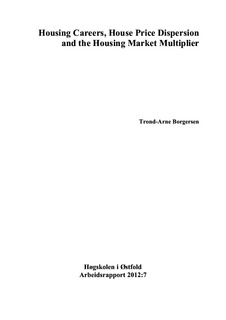| dc.description.abstract | Housing markets reflect our housing consumption profile over the life cycle. As we age, marry and have kids, we seek larger dwellings and to a greater extent owner-occupied housing. The up-trading process has two key characteristics: First, it is equity induced.
Second, it impacts both the supply and demand sides of housing markets. This is our point of departure. The paper combines a housing ladder with a house price index to show how up-trading amplifies shocks and introduces a multiplier into the housing market. The interplay between market segments results in up-trading induced price dispersion and a price response
in the segments on top of the ladder that exceeds those of segments further down, even when shocks are equal across market segments. Finally, as up-trading impacts both housing supply
and housing demand even balanced shocks to net demand might impact house prices.
Focusing on different market segments, both direct (the size effect) and indirect (the up-trading effect) effects impact the house price index. This paper highlights policy options at a finer level when in need of stimulating or dampening house price cycles. | no_NO |
